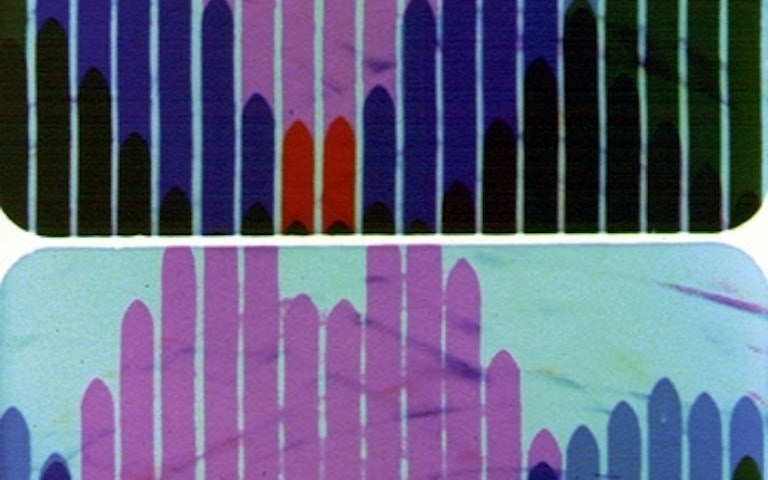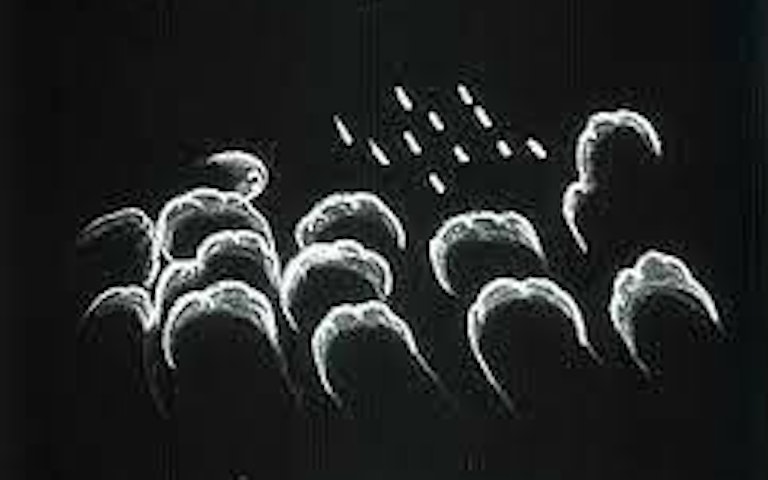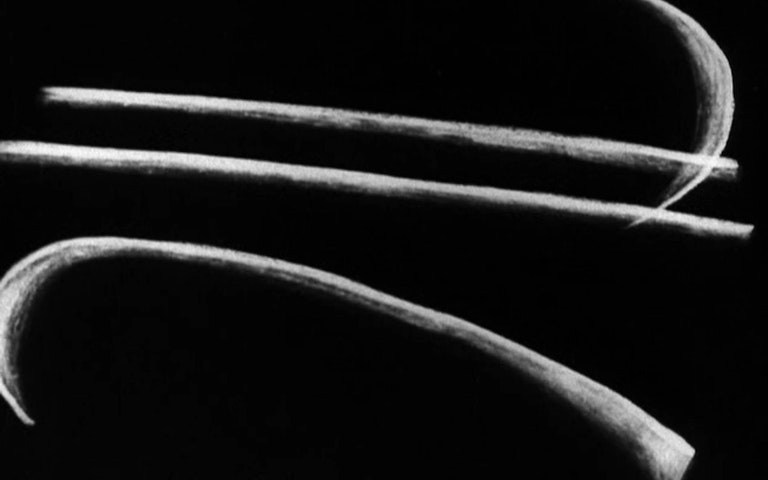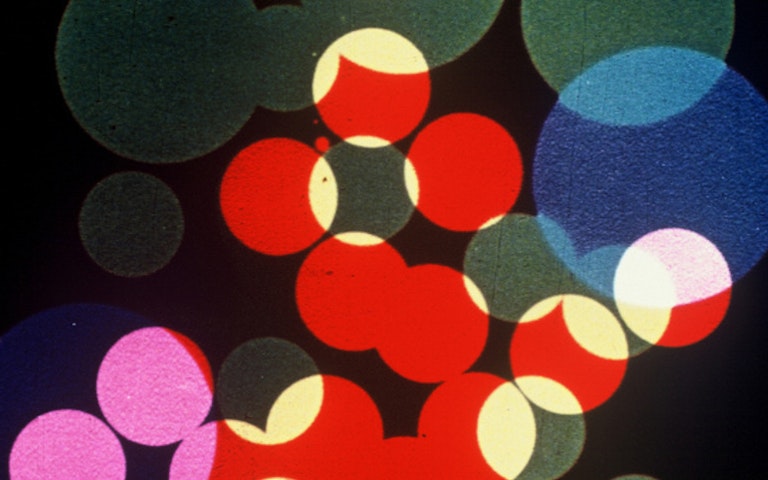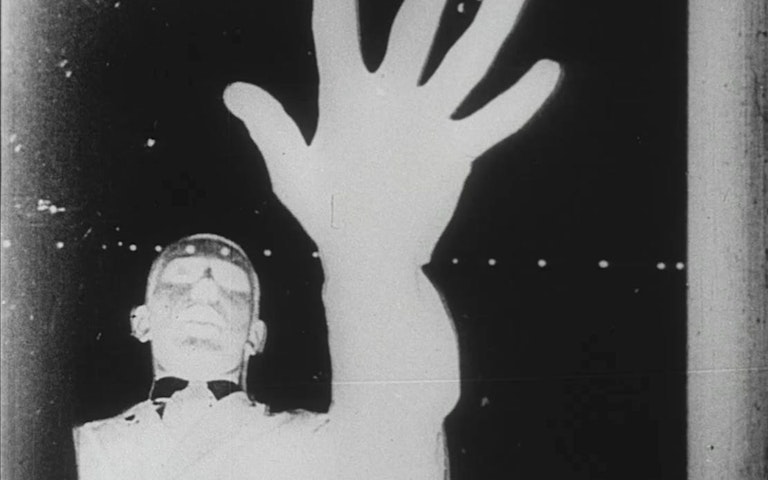Director
Oskar Fischinger
Edition 1982
3'
-
1931
-
Short
-
Dialogue:
German
Brahms' Hungarian Dance No. 5 shapes a framework vital for the kind of spiritual dichotomy and tensions that Fischinger loved. In STUDY No. 7, the pulsations, the fast rhythms of the Csardas melody are visually represented by sharp points: thin razor blades, which seem to penetrate a deep space, rotating and flying above the spectator. In contrast, the soft and languid chords of gypsy violins seem to rise to the surface of the screen, swirling in "art nouveau" tendrils and soft diamonds. (William Moritz)
Image gallery

Credits
Directors
Oskar Fischinger
More info
Dialogue
German
Countries of production
Germany
Year
1931


